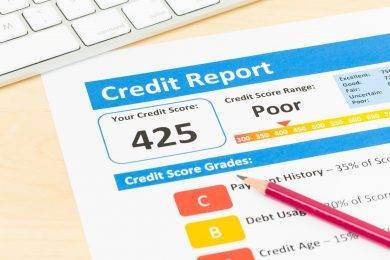The credit score of the average American is 711. Pretty good, right? Making sure that you don’t overspend on your credit cards and pay your bills on time are two huge ways to make sure that your credit goes from good to excellent.
If you’ve noticed a recent drop in your credit score, then you might be concerned about credit report errors. What do you when you pull your credit report and something is off? Read on to learn how to dispute credit report information.
Pull All of Your Credit Reports
The first thing you need to do when you suspect that something is amiss with your credit is pull all of your credit reports.
As an American consumer, you are entitled to a free copy of your credit report from each of the three major credit reporting bureaus. You can only obtain these reports at the Annual Credit Report website. You will need to verify questions about your financial history, but you will not have to enter a credit card number.
It’s important to pull all three reports because different bureaus have different information. You don’t want to miss an error just because it’s not on the report you pulled!
Identify the Creditor
Once you have all three of your credit reports, comb through them thoroughly to get information about the accounts you have open and closed. Your reports will also show your payment history and current balance on all of your accounts. Obvious signs of issues with your credit include accounts with which you are not familiar, and accounts that indicate you are past due or seriously delinquent.
All accounts on your credit report should identify who the creditor is that placed the account, and it should give you enough information to contact the creditor. Once you’re armed with that information, you’re ready to move to the next step.
Contact the Credit Bureaus
You’ve found incorrect information on your credit report, so how do you fix it?
There are three main ways to dispute information on your credit report: online, by phone, or by mail. The method you choose to dispute the information depends on how serious the error is. If it’s a case identity theft, you might find it to be more effective to mail in copies of any documentation that you have.
You might find that it’s helpful to have representation on your side if your credit has taken a major hit from something like identity theft. Here, they can help you work more effectively with the credit bureaus to get your credit back in good shape. It does cost money up front, but you’ll likely have a better outcome.
It’s important to note that you will have to follow the dispute process for each credit bureau that has incorrect information listed on your report.
Contact the Creditor
You’ve filed a dispute with the credit bureaus, and that might do the trick. The Consumer Financial Protection Bureau recommends that consumers also contact the creditor listed on their reports as well.
You’ll want to draft a letter to send to the creditor that includes your contact information, information about the error on your report, and an explanation of why it’s wrong. Include any supporting documentation you have as an attachment. Maintain copies of any communications you have with the creditor.
If you choose to send out your communications via mail, consider sending it via certified mail with a return receipt.
Waiting Period
Once you’ve submitted your dispute with the credit bureaus and the creditors, you’ll have to wait approximately 30 to 45 days for them to get back to you about your disputed information.
During this time, the credit bureau will commence an investigation into your dispute. This includes contacting the furnisher of the information on your credit report to ask for supporting information. Once they’ve finished their investigation, they are required to contact you within five days.
If you’ve filed a dispute with the creditor, they will conduct their own internal investigation into the claim. If they find that the information is accurate, or if they stand by the report information, then they will not remove it from your report. At that point, you’ll need to rely on working with the credit reporting bureaus to get the errors cleared up.
Review the Response
There are a couple of different ways that the credit bureau can respond to your claim.
The best case is that the agency finds in your favor and removes the information from your credit report. If the dispute results in a change to your credit report, then the credit reporting agency must provide you with a new copy of your credit report. They will also be required to give you the name, address, and phone number of the furnisher of the incorrect information.
The credit bureau may respond that your claim is unfounded or even frivolous. These findings are common when you don’t include supporting information or if you’ve tried to dispute the same piece of information on your credit report multiple times.
Monitor Your Credit
The best way to prevent major hiccups in your credit is to make sure that you’re constantly monitoring it. Many credit card companies offer credit monitoring and credit score simulators to help you do just that. There are also free websites online, like Credit Karma, that can send you notifications if something pops up on your credit.
Staying on top of your credit will help you prevent a small problem from turning into a big one.
Knowing How to Dispute Credit Report Info Is the First Step Toward Excellent Credit!
Finding an error on your credit report is a startling thing. Learning how to dispute credit report information is the best way to take the power back into your hands. Be sure to follow these steps and you’ll breathing a sigh of relief when your credit score goes right back up!
Do you want to learn more great tips about managing your credit and personal finances? Look no further! Check out the rest of our blog for tons of great advice that’ll keep your personal finance game on point.











